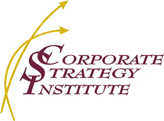Latest Posts
When looking at a resume, what do you find most significant?
In this series, we have polled HR experts in various fields to help determine what the Growth Strategies are in getting the right people for your organization. To see posts #1 and #2, go to www.corporatestrategy.com and click on blogs. Part #1 covered the question of the candidates technical fit for the job, part #2 covered the candidates cultural fit for the organization. In this, the 3rd part, we are asking the question: When looking at a resume, what do you find most significant?
Posted in Governance, Growth, Organizational Strategy, Strategic Planning by Dr. Sarah Layton on July 29, 2013.
Tags: growth, strategic planning
In the first post of this series, we answered the question what do you ask a prospective employee to determine if their technical expertise is a match for your organization? Go to our last blog to see the post on this question.
This week, the experts are responding to the question: What do you ask a prospective employee to determine if they will be a good fit into your organization’s culture? Since my expertise is in business development, increasing the value of a company and the corporate strategic planning side of a company’s growth strategy, I reached out to three experts to have them weigh in on the question.
Posted in Growth, Organizational Strategy, Strategic Planning by Dr. Sarah Layton on July 18, 2013.
A dear friend and prominent lawyer brought today’s topic series to my attention. He says one of the keys to the success of his firm is getting the right mix of people. Over his career, he has seen many firms implode because the struggle to find and retain the right mix of personalities could not be overcome. Having a great corporate strategy, a written and well thought out strategic plan but the wrong mix of people will not get the best results. With over 20 years in the corporate consulting world, I can certainly attest that having the right mix of people will get better outcomes in almost every parameter you care to use. The corporate strategy, the strategic plan and the right mix of people are important to achieving the very highest outcome. I can’t name a single company that has employees that doesn’t struggle with the mix-of-people issue once in a while.
Posted in Growth, Organizational Strategy, Strategic Planning by Dr. Sarah Layton on July 10, 2013.
Tags: corporate growth, corporate strategy, growth, organizational strategy, strategic planning, strategy, talent
Restaurants serve many people every single day and every single customer represents an opportunity to get free value enhancing growth strategies for their business. My family dines out several times a week. Someone in the food service industry must have said that the best way to never get complaints or good ideas from your customers is to not want any complaints or good ideas.
Posted in Growth, Organizational Strategy by Dr. Sarah Layton on June 18, 2013.
Tags: growth, organizational strategy, strategy
By Dr. Sarah Layton
Step One – Get Healthy
Many companies that try to grow are not ready to handle the increased business. When we talk about growth, we are talking about significant growth, not just incremental growth. To handle significant growth, an organization needs to be operationally fit. We get organizations operationally fit through our Value Enhancement Audit Diagnostic. This is an intense evaluation of an organization’s operations that delves into up to 15 areas and calculates up to 120 ratios. We look at the organization from a growth standpoint, which is very different than the way your auditors and other consultants look at the finances. We do not replace, but work with your other professionals such as attorneys, CPA’s and consultants. These ratios, combined with the results of in-depth quantitative interviews and expert analysis results in an evaluation that identifies where your organization is weak and what exactly it is costing you. It then makes recommendations to correct these weaknesses and shows what it will save you in revenue and earnings.
Posted in Growth, Organizational Strategy, Strategic Planning by Dr. Sarah Layton on May 21, 2013.
You go to the doctor every year for a health checkup to make sure your body is running smoothly. She checks your weight, blood pressure, takes your history, asks about your eating habits, your exercise habits, and basically checks every bodily system. The tests that are performed tell the doctor about the current state of your body, so she can give you the most accurate advice about improving your health.
The doctor tries to identify the areas of weakness to avert a major illness and additional expense. This is what the Strategy Diagnostic does for an organization.
We perform the health checkup using the Strategy Diagnostic for your organization. We run the broad spectrum of financial tests to determine where you can improve your operations and save money. We help you create a lean, efficient operation that is prepared to move in any desired direction in the future.
Just as your lifestyle habits impact your health, the finances of an organization are the result of an organization’s operations. Whatever is going on in sales, marketing, human resources, and all operations will show up in the financial results. When we apply the financials to all aspects of the organization and then compare the results to the accepted norms of your particular industry, we can tell you what needs to be done to become more efficient, healthier.
Specifically, we are looking for areas inside your organization that will help you increase revenue, decrease costs and raise the EBITDA, thus specifically raising the value of the company.
When you have finished implementing our recommendations, then you are ready to go after your Blue Ocean Strategy, or face the banks, venture capitalists, business brokers, investors, or expand your business any way you desire.
©2013 Corporate Strategy Institute
Posted in Growth, Organizational Strategy by Dr. Sarah Layton on January 3, 2013.
Chief Executive Magazine (chiefexecutive.net) suggested that to become more strategic, you should do three things.
1. Understand what strategic means in your industry. “Executives need to study and understand the economics, psychology and laws of their industry and let that context guide their thinking. Notice I said “guide” not “limit”.
2. Tailored executive education courses can be beneficial. We took an indepth look at 20 different trends that would shape the industry in the next decade, discussing both the trend itself and the impact on supply of and demand for the organizations products and services.
3. Become expert at identifying potential disrupters. Examples include technological or manufacturing techniques. Cross cutting trends can upend value chains, transform industries and shift profit pools and competitive advantage.
Permanent link to this post (131 words, estimated 31 secs reading time)
Posted in Organizational Strategy by Dr. Sarah Layton on August 27, 2012.
The current issue of Harvard Business Review article* by Justin Fox and Jay Lorsch of Harvard are arguing the importance of the individual shareholder in the wake of the trend of institutional shareholders now comprising more than 50% of stock ownership. With Facebook’s Zuckerberg doing an end run around the individual shareholders, he owns controlling interest in Facebook.
Posted in Governance by Dr. Sarah Layton on August 9, 2012.
Tags: corporate strategy, governance, shareholder, strategic planning
McKinsey Quarterly has an interesting article on the hidden flaws of corporate strategy. Here are the best reasons I have seen for why good executives support bad strategies. There are seven basic reasons. The authors relate these to a function of how our brains are wired. To read the complete article you can find it at the link below.
Flaw #1: Overconfidence. In our abilities; in our ability to make accurate estimates and other areas. To counter this overconfidence, test strategies under wider range of scenarios; add 20 – 25% to the most pessimistic scenario; and build more flexibility and options in to the corporate strategy.
Posted in Organizational Strategy, Strategic Planning by Dr. Sarah Layton on August 8, 2012.
Just finished reading the biography of Steve Jobs and the Zen of Steve Jobs. An interesting man who seemed tortured at times trying to find the meaning of life. Not known for his acts of kindness, yet he was driven to create products his market loved. A quick read with some lessons learned.
Permanent link to this post (54 words, estimated 13 secs reading time)
Posted in Governance, Organizational Strategy by Dr. Sarah Layton on July 26, 2012.















